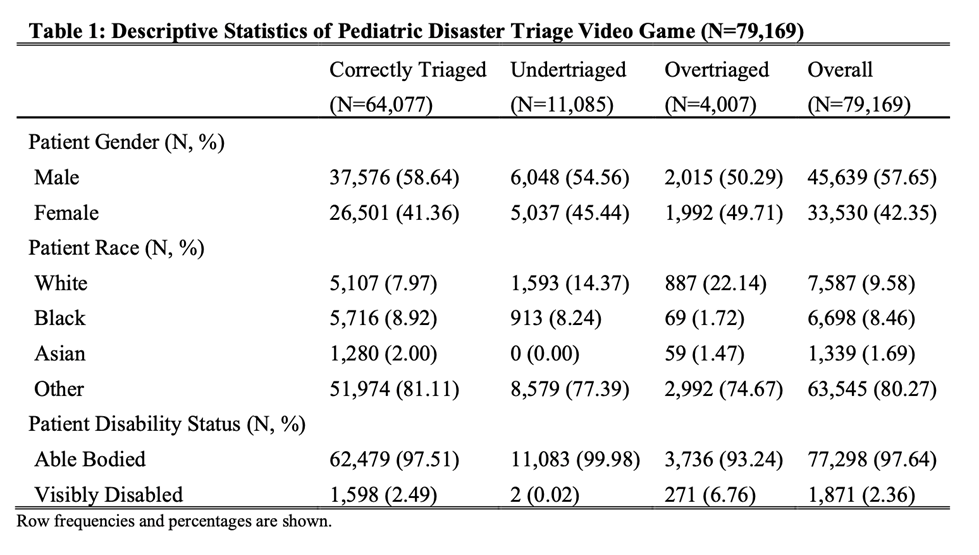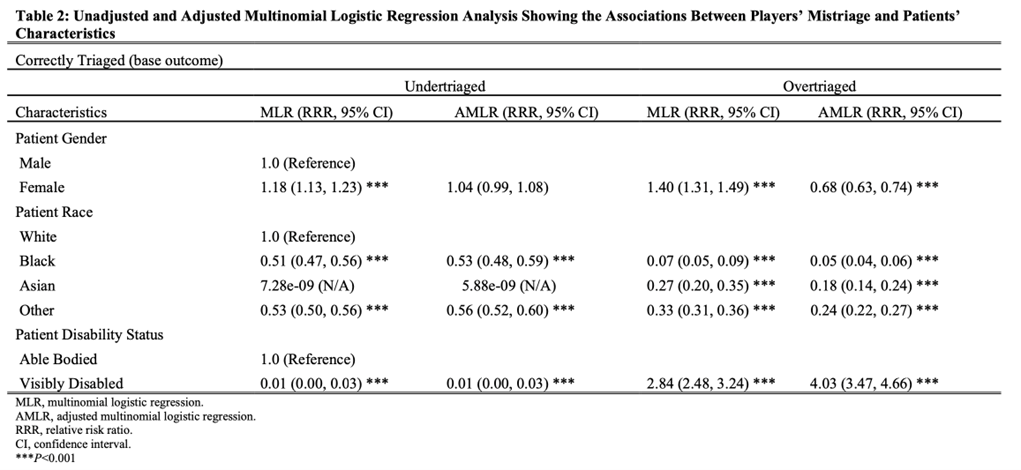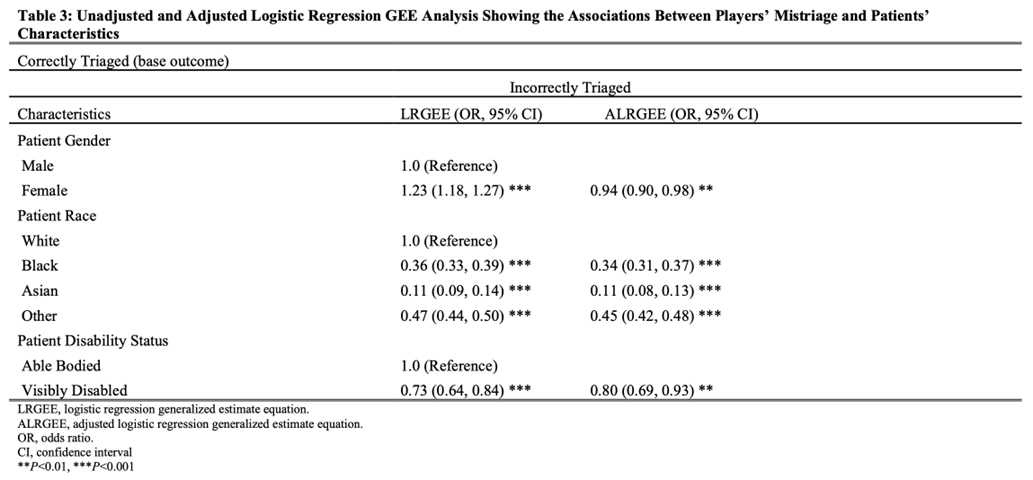Emergency Medicine
Session: Emergency Medicine 7: Emergency Medical Services
219 - The Influence of Race, Gender, and Disability in Pediatric Mass Casualty Triage: Insights from a Video Game Simulation
Sunday, May 5, 2024
3:30 PM - 6:00 PM ET
Poster Number: 219
Publication Number: 219.1953
Publication Number: 219.1953

Victoria C. Fairchild, MD (she/her/hers)
Fellow Physician
Yale-New Haven Children's Hospital
Milford, Connecticut, United States
Presenting Author(s)
Background: Previous research has highlighted racial and ethnic disparities in Emergency Severity Index (ESI) assignments in Emergency Department (ED) triage, however investigations of such disparities in the context of disaster triage are lacking.
Objective: This study investigates the impact of portrayed race, gender, and disability status on pediatric mass casualty triage within the context of a disaster simulation video game, "60 Seconds to Survival (60S)". We hypothesized that patients portrayed as Black, Asian, female, and visibly disabled in the disaster triage video game 60 Seconds to Survival (60S) would be associated with under-triage when compared to white, male, and visibly able-bodied patients.
Design/Methods: A retrospective cross-sectional study was conducted using data from players (EMS personnel and physicians) who participated in the screen-based simulation, 60S. Players were tasked with triaging 12 virtual patients, each varying in race, ethnicity, gender, and disability status, across three disaster scenarios (school shooting, house fire, tornado). Triage priorities were color-coded (red, yellow, green, or black), and expected triage levels were established using a modified Delphi method. A scoring system assessed the accuracy of triage decisions. Relative risk ratios were calculated using multinomial logistic regression and generalizing estimating equations logistic regression was utilized to account for clustering.
Results: The analysis included 2547 players that played the game a total of 8982 times (Table 1). Patients portrayed as Black had a 47.0% lower relative risk of being under-triaged compared to white patients (RR = 0.530, 95% CI: 0.479, 0.587, p < 0.001). Similarly, patients portrayed as other races had a 44.3% lower relative risk of under-triage (RR = 0.557, 95% CI: 0.521, 0.596, p < 0.001), and visibly disabled patients had a 99.3% lower relative risk (RR = 0.007, 95% CI: 0.002, 0.029, p < 0.001) when compared to white, visibly able-bodied patients (Table 2). Compared to patients who were portrayed as white, male, and without visible disability, patients had lower odds of being incorrectly triaged if they were portrayed as Black (66%), Asian (89%), female (6%), or visibly disabled (20%) when accounting for clustering (Table 3).
Conclusion(s): In the 60S video game simulation, patients portrayed as Black, Asian, female, or visibly disabled were not associated with under-triage. Future research should explore these factors in live simulations or real-world disaster triage scenarios to better understand their correlation with triage decisions.



